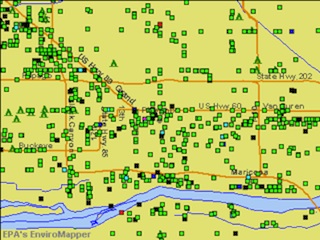Andrew Ross has done it again. He’s researched something new, and written it up elegantly. In this case, the topic is sustainability, in that most right-wing of cities, Phoenix (Arizona). Ross weaves in a complex set of stories and voices, from right-wing property developers to bureaucrats, environmentalists, environmental justice activists and Native tribes. He begins this book with a simple-yet heretical- observation, a 21st Century version of the Frank Sinatra standard, New York, New York. That is, Ross contends, that if any city can make sustainability matter, it’s not the environmentally friendly American cities like San Francisco and Portland, but rather, cities like Phoenix- short on water, defined by sprawl and spawning ground to Goldwater and his ilk.
When I first heard Ross talk on the topic, I was skeptical. By the time I finished Bird on Fire, I was convinced of his choice to study Phoenix as the best way to illustrate one of his central arguments: that sustainability “is a social challenge as much as it is a biophysical goal” (199). For over 30 years, scholars of environmental racism and the environmental justice movement have argued that one of the major challenges to sustainability is class and race stratification between environmental and social/environmental justice activists. Indeed, Ross’s analysis of Phoenix illustrates precisely how the physical, ecological, and ideological landscapes of sustainability discourse and policy in Phoenix are in lock-step with contentious debates around race, class and nation- state politics, especially around the politics of anti-immigrationism and of global climate politics.
Ross does an excellent job of elucidating the landscapes of environmental racism in Phoenix, which has received little scholarly attention. Critical geographer Ruth Gilmore describes racism as the state-sanctioned or extralegal production and exploitation of group-differentiated vulnerability to premature death. This vulnerability manifests through higher rates of illnesses (cancer, asthma) and poorer health outcomes both on the individual and the community level. This situation is certainly the case in South Phoenix where Ross recounts the historical legacy of racial segregation, redlining and zoning that contained the African-American, Latino and Native populations of Phoenix, right alongside noxious and polluting facilities. He writes, “It is no small irony that the city’s first sewage processing plant was located in South Phoenix in 1921, at a time when neighborhoods there had no water or sewage infrastructure of their own” (121). Although not a “new” or unique observation, nonetheless, the impacts of this history on the health, lives and life chances of vulnerable populations remain devastating. The predominantly minority population in Phoenix continues to host a massively disproportionate number of hazardous sites in both industrial and residential areas. According to official data, one working class neighborhood in a single zip code in South Phoenix produces nearly 40 percent of all of the city’s hazardous emissions (122).
In the face of overwhelming everyday pollution exposure as well as anomalous toxic incidents (such as a huge fire in a circuit board facility that burned thousands of pounds of sulfuric acid and hydrogen fluoride), community members have become activated. People like Mike Pops, a sharecropper’s son from Mississippi, formed Concerned Residents of South Phoenix (CRSP) to fight the high rates of cancer and other illnesses. Elsewhere, Ross details the successful fight by the Gila River Indian Community (GRIC) in settling a water rights claim in 2003 that provided them with over 653,500 acre-feet of water after their ancestral access to water has been severely curtailed.
Overall, Ross is successful in unmasking the complications behind the “feel-good/no-cost” environmentalist discourse that is ascendant in our green capitalist moment. Based on over 200 interviews, Ross succeeds where the policy-makers, activists, technocrats and private citizens in Phoenix fail- at putting together the dots outside of self-interested “positions” (and between the past and the present).
There are at least three audiences for this book. First, one hopes that this book is taken seriously in Phoenix. Second, it should also read widely by all thought to have a professional stake in “sustainability.” Lastly, it should be read by those with a personal rather than a professional stake in sustainability (a much broader audience than the first two).
While Ross ends his book with the GRIC victory as a partial salve in a generally ambivalent account of sustainability discourse and practice, I wonder about whether hopefulness is at all warranted. Much of the excitement around green jobs and solar industries, and the relentless boosterism of people like New York Times columnist Thomas Friedman in Hot Flat and Crowded: Why We Need a Green Revolution – And How it Can Renew America (and more recently in That Used to be US: How America Fell Behind in the World It Invented and How We Can Come Back), reinforces Ross’s contention that sustainability in practice often ends up recreating the existing social order and its hierarchies. I also wanted to know more about the global climate justice movement and whether that might be a significant example of a counter-hegemonic sustainability movement. Overall, Bird on Fire is an excellent, well-researched and well-written book, significant in its broader insights about the contemporary cultural politics of sustainability.


